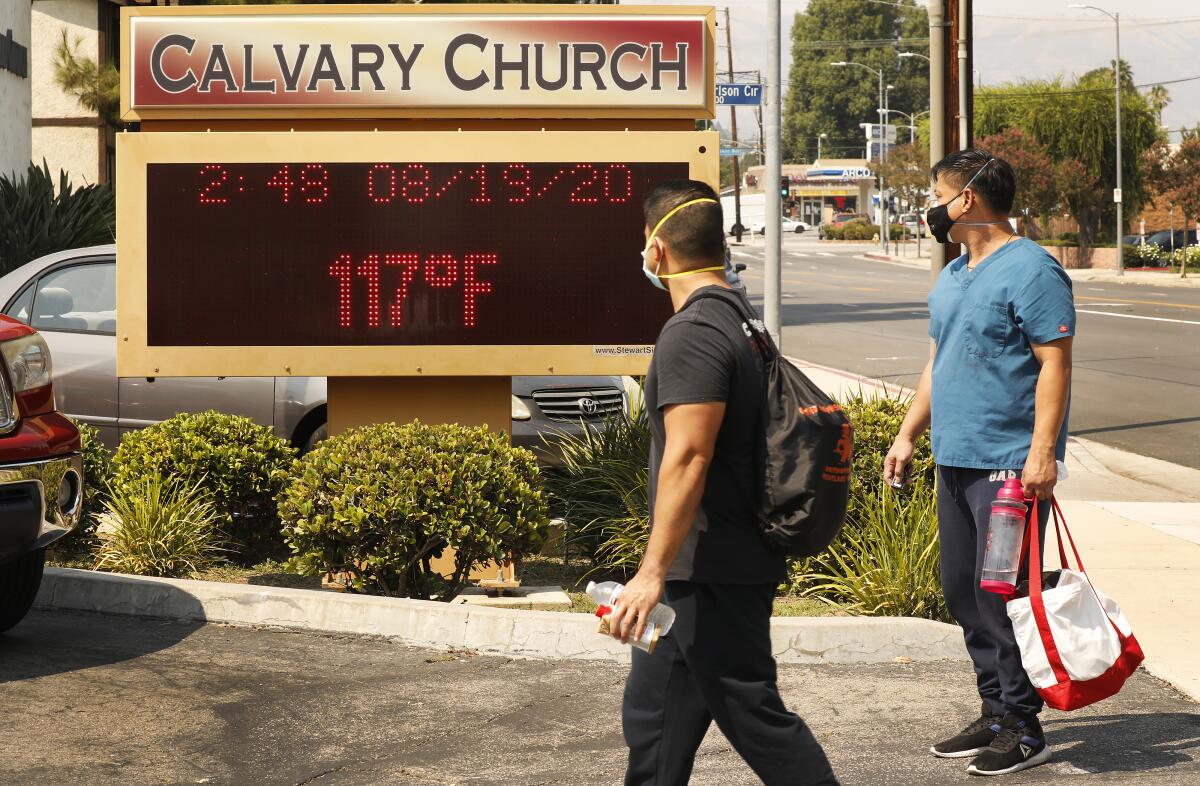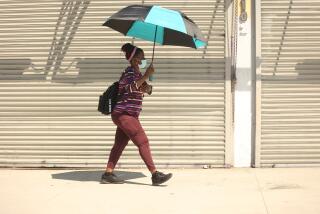Letters to the Editor: Mitigation can’t beat extreme heat. Tax carbon emissions now

- Share via
To the editor: There’s a wide-ranging array of costly and deadly consequences of climate change, among them the extreme heat detailed by The Times in its recent investigation. Mitigation efforts are essential, but our primary focus should be on the root cause.
Our habit of living in opposition to the laws of nature is not sustainable. At this point, Mother Nature determines the rules, and she will have her way.
Our biggest problem is still carbon emissions. The best available solution is a carbon emissions tax that factors in environmental damage as part of the overhead business costs. This would let the marketplace drive the transition to renewable energy.
As proposed in the Energy Innovation and Carbon Dividend Act currently in the House, we can largely eliminate the transition’s financial stress to most people by returning the collected tax revenue to all citizens. This means that only high-level carbon polluters will pay more.
Manjit Kaur, Los Angeles
..
To the editor: Your investigation notes the unreported deaths attributable to heat waves and a general lack of air conditioning and ventilation among those too poor to afford it.
When I was growing up in East Africa in the 1960s, air conditioning was rare to nonexistent. Buildings were constructed accordingly. Permanently open louvers, wide-opening windows and ceiling fans were everywhere.
Surviving high school classes (which I attended in Dar es Salaam, Tanzania) was easy, as both sides of the classroom were wide open, with air circulation permitting personal cooling by perspiration.
It seems many Southern California homes were designed to be air conditioned with closed spaces and minimal circulation. It is also less costly to build a wall instead of installing one with large, opening windows, and ceiling fans. All this contributes to some people’s inability to survive truly hot days.
James Thurber, Mountain View, Calif.
..
To the editor: Thank you for your coverage of how the heat is affecting our lives, but I saw only passing mention of farmworkers.
Did I miss something? Farmworkers are essential to our economy — without them, we cannot eat. They are largely people of color and undocumented, but they are human beings for goodness’ sake.
Only California, Oregon and Washington state regulate the need for shady breaks and clean water, but the incentive for laborers to keep working is ever present because if they don’t, they don’t get paid and they aren’t able to feed their own families.
What about the remaining states? We need federal legislation to solve this problem.
Suzanne Darweesh, Fullerton
..
To the editor: The body cools itself by the evaporation of sweat. If we can’t sweat, or if sweat cannot evaporate, we cannot cool down. Proteins in the body begin to denature if the core temperature goes over 105 degrees Fahrenheit.
On hot days, if the humidity is near 100%, sweat will not evaporate and the body will overheat. A temperature of 90 degrees at 100% humidity has a heat index of 130 degrees, which quickly becomes deadly.
High temperatures that come with high humidity will become more common in the coming decades as global warming heats our Earth. This is yet another reason to stop burning fossil fuels.
Phil Beauchamp, Chino Hills
..
To the editor: High heat is deadly in California, and yet while heating must be provided to tenants by landlords as a health-related condition of rental, air conditioning is still optional.
Suzan Lowitz, Los Angeles
..
To the editor: Another thing to consider when discussing deadly heat waves is that temperature is always measured in a shady area. So someone working outside under the sun in 110-degree heat is actually feeling about 125 degrees of heat.
Michael Pollak, Los Angeles
More to Read
A cure for the common opinion
Get thought-provoking perspectives with our weekly newsletter.
You may occasionally receive promotional content from the Los Angeles Times.









